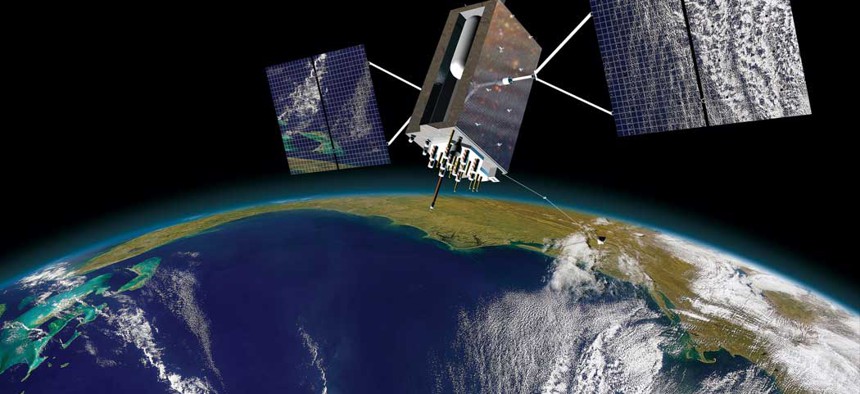Air Force moves ahead with GPS III preparations
The service gives Lockheed Martin a $395 million contract modification for work on the ninth and tenth of the 32-satellite constellation.
The Air Force is moving ahead with its delayed GPS III constellation, awarding Lockheed Martin a $395 million contract modification for the ninth and tenth of what will be a 32-satellite constellation.
Deployment of the third generation of the Global Positioning System, which is expected to have a 25 percent longer lifespan, three times the accuracy and eight times the anti-jamming capability of GPS II, has been delayed by funding cuts and some technical problems. Last December, Gen. John Hyten, commander of the Air Force Space Command, called the system’s Next Generation Operational Control System, which is made by Raytheon, a “disaster,” calling for changes with the program.
The Air Force and Lockheed said early last year they had gotten the GPS III program back on schedule and were ready to begin testing on the satellites. Meanwhile, the service has continued to make use of the GPS II constellation, launching the twelfth and final GPS IIF satellite in February this year. Air Force officials have said that one reason they could weather the budget cuts to GPS III—which included reducing the number of satellites it would buy per year for the next several years—was because the GPS II satellites were lasting longer than they were expected to.
In all, a total of 62 satellites have been launched as part of the second generation of the GPS program, which started in 1989.
In addition to extended life, improved accuracy and stronger anti-jamming capabilities—something of a concern with potential adversaries such as China and Russia—GPS III also will add a civil L1C signal, which will allow civil users to gain interoperability with other international satellite systems.
The first GPS III satellite is expected to be launched in 2017. Work under the latest modification, for space vehicles nine and 10, is to be completed by Aug. 8, 2022.
NEXT STORY: Pentagon wants an imaging sensor that can think




